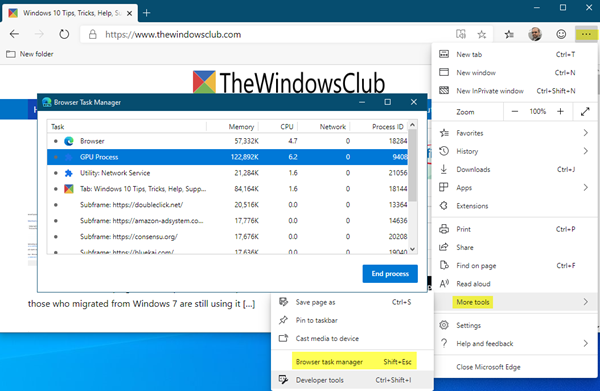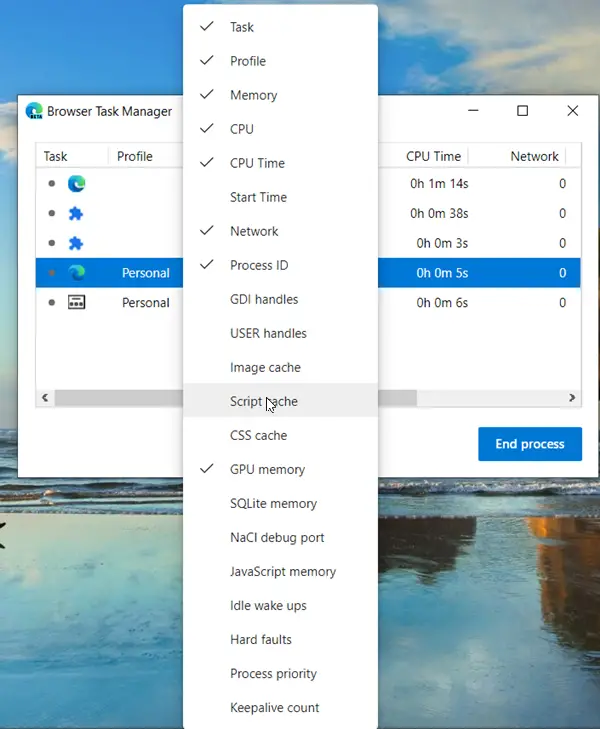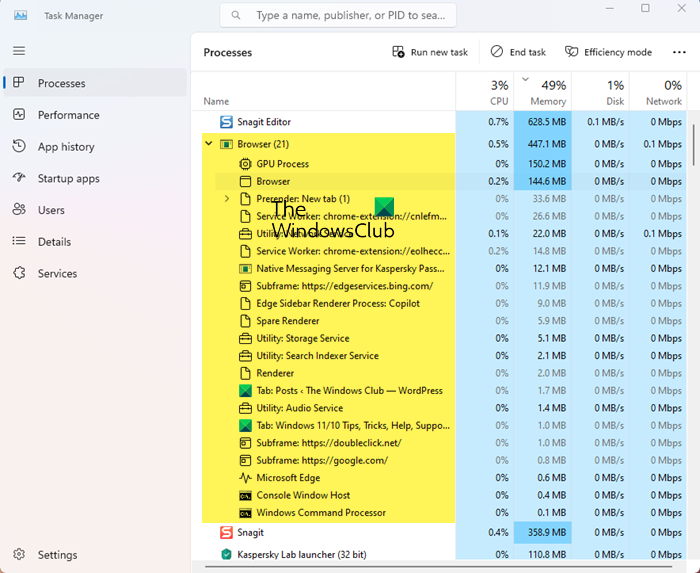The Chromium-based version of the Microsoft Edge browser has seen some notable changes. All these changes are designed to enhance your productivity and increase the utility of the browser. There’s a new Browser Task Manager that has been added to Edge. Let’s see what is so special about it in this post.
Using Browser Task Manager in Microsoft Edge
Almost all operating systems run a built-in Task Manager that lets users view & control the processes that are currently active on their system. Some web browsers like Google Chrome also feature one to help users eliminate troublesome processes, tabs, and extensions. Designed along the same lines, Browser Task Manager in Edge allows you to kill unwanted tasks or processes.

To access Browser Task Manager in Edge, all you need to do is-
- Click on ‘Settings & More’ option
- Scroll down to ‘More Tools’ and select ‘Browser Task Manager’
- Alternatively, you can use the shortcut key – Shift+Escape to launch the Browser Task Manager.

Once done, you can right-click on an entry and check its information related to one of the following events,
- Task
- Profile
- Memory
- CPU
- CPU Time
- Start Time
- Network
- Process ID
- GDI Handles
- User Handles
- Image Cache
- Script Cache
- CSS Cache
- GPU Memory
- SQLite Memory
- NaCl debug port
- JavaScript memory
- Idle wake ups
- Hard faults
- Process priority
- Keepalive count.
The Edge Task Manager lets you close multiple tabs. The Memory and CPU usage is monitored every second.
When you try to kill a rendered engine process that populates a tab, you may get an error message in the content area informing you that the tab isn’t getting any further content. This is because the ‘renderer’ is already dead. Ideally, when you have ended the process, the tab should not remain open and should be gone. This may not happen.
You can right-click on the Tab row and select the columns you want to show or hide. Deleting a tab will improve the performance of your Edge browser by a bit.
Let us know how you like using this feature.
What is Edge Browser exe process I see in Windows Task Manager?

Any process can be named anything. So to check if Browser.exe or Edge.exe process is the legitimate Windows process, right-click on it and select Open file location. The legit path should be C:\Program Files (x86)\Microsoft\Edge\Application. If it is located anywhere else, it could be malware. Checking it Properties will also help.
How to end Microsoft Edge in Task Manager?
To end Microsoft Edge in Windows Task Manager, open Task Manager by pressing Ctrl+Shift+Esc, find the Microsoft Edge process, select it, and click End Task to close it. This will terminate Edge and all related background activities.
Leave a Reply